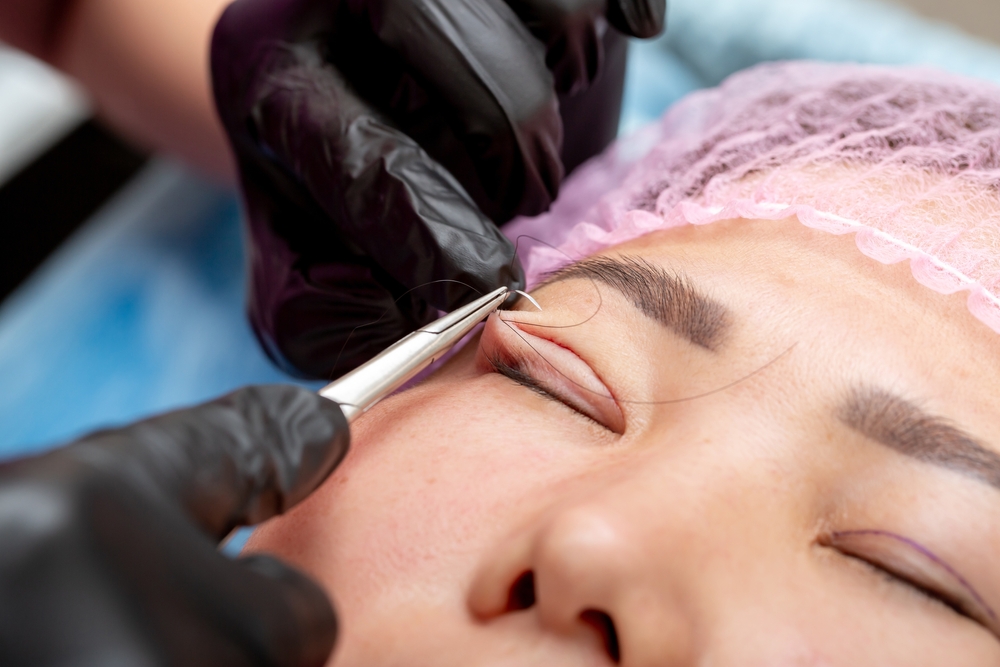What Causes Ptosis? Causes, Symptoms, and Treatment of Droopy Eyelids.
16 Dec 2025
doctor-image-202507185103425.webp)
Writer
Dr.Jirach Jatechayanon (MD,MSc)
History
- Bachelor of Medicine, Faculty of Medicine, Rangsit University
- Board Certification in Ophthalmology, Faculty of Medicine, Khon Kaen University
- Certificate of Advanced training in double eyelid surgery under the guidance of a Dr. Cheangariyavong, Facial Plastic and Reconstructive Surgeon
- Certificate of Advanced training in double eyelid surgery through the International Fellowship in Advanced Aesthetic Science program (IFAAS), South Korea
Ptosis is a symptom that should not be overlooked as we age
Have you noticed? your eyelids starting to droop, blurred vision, or eye fatigue after prolonged use? These symptoms might not simply be temporary tiredness but could indicate ptosis, a condition involving weakened eyelid muscles that can significantly affect both vision and overall quality of life.
What is Ptosis?
Ptosis refers to a condition where the levator muscle, responsible for lifting the upper eyelid, weakens or malfunctions, leading to excessive drooping of the eyelid. In certain instances, this condition can impede vision, particularly when the eyes are fatigued or overused for extended periods.
This condition can affect one or both eyes and is observed across all age groups, from newborns and children to adults and the elderly. While it may be temporary in some cases, others require proper diagnosis and long-term care.
What Causes Ptosis?
Understanding the causes of ptosis is essential for accurate diagnosis and effective treatment planning. The primary causes can be classified into four key categories:
1. Neuromuscular Disorders
Ptosis can be caused by impaired nerve transmission, such as in Myasthenia Gravis (MG), an autoimmune disease that causes muscle weakness throughout the body. When this condition specifically affects the eye muscles, it is referred to as Ocular Myasthenia Gravis (OMG). This disorder disrupts the communication between the brain and the muscles responsible for lifting the eyelids, resulting in eyelid drooping and difficulty opening the eyes.
2. Age-Related degeneration
With advancing age, the muscles and connective tissues around the eyes naturally weaken, resulting in a gradual drooping of the upper eyelids. This is a common condition in individuals over 50 years of age.
3. Congenital or Genetic conditions
Some people are born with underdeveloped eyelid muscles due to genetic factors. Congenital ptosis may be present from birth and, if left untreated, can potentially lead to impaired visual development in children.
4. Injury or Treatment-Related causes
Ptosis can be induced by eye surgery, physical trauma, or prolonged contact lens wear. Additionally, certain cosmetic procedures, such as improperly administered Botox injections , can disrupt the function of the eyelid muscles.
What are the symptoms of Ptosis?
Ptosis presents with noticeable symptoms, including:
1. Drooping upper eyelids on one or both sides, often resulting in a sleepy or tired appearance, particularly in the late afternoon or following extended eye use.
2. An unconscious raising of the eyebrows as a physical response to attempt to open the eyes wider, which is especially evident when the eyelids are significantly drooping.
3.Experiencing blurred or double vision, which can occur, particularly when other muscles of the eye are also involved.
4.Eye fatigue or discomfort around the forehead and eyes, resulting from the continuous effort to keep the eyes open.
_1753937036.jpg)
How is Ptosis treated?
Accurate diagnosis and treatment planning begin with a thorough examination by a specialized ophthalmologist.
The physician will evaluate the severity of eyelid drooping, assess muscle function, and may recommend additional tests such as neurological assessments or MRI scans to identify the underlying cause and exclude related conditions.
Medication treatment for neuromuscular causes.
In cases of ptosis caused by Myasthenia Gravis (MG) or other neuromuscular disorders, treatment typically involves medications that enhance muscle function, such as anticholinesterase drugs or steroids, to manage and control symptom
Use of eyelid support devices.
For individuals with ptosis who are not suitable for surgery or have treatment limitations. A ptosis crutch, which attaches to eyeglasses, provides temporary support to the eyelid, which ultimately prevents visual obstruction.

Ptosis Repair surgery for severe cases or those requiring permanent results.
For individuals with severe ptosis or those seeking a permanent solution, surgical intervention often provides the most effective treatment. The procedure typically involves either tightening the levator muscle or employing supportive material to elevate the eyelid to a more functional and natural position. Surgical plans are tailored based on each patient’s unique eye structure and aesthetic goals to ensure a balanced, natural outcome.
If you’re experiencing droopy eyelids, blurred vision, or other symptoms of eyelid muscle weakness, we encourage you to consult with our specialists at Bangkok Eye Aesthetics (BEA Clinic) , an oculoplastic clinic under the guidance of board-certified ophthalmologists. We offer ptosis repair surgery that combines functional improvement with aesthetic refinement, aiming to restore your clear vision, confident appearance, and overall facial harmony.
📍 Book a consultation via LINE Official : @beaclinic
📞 Or Call : 064-196-3635
Reference :
What Is Ptosis?. Retrieved on June 18, 2025, from https://www.aao.org/eye-health/diseases/what-is-ptosis
FAQ
How is correcting weak eye muscles different from regular upper eyelid surgery?

Correction of ptosis helps lift the upper eyelid, allowing the eyes to open wider and addressing issues such as droopy, sleepy-looking eyes that resemble fatigue. This is different from standard double eyelid surgery, which focuses only on creating the eyelid crease. However, the surgical technique used is similar to that of double eyelid surgery.
How many days of recovery are needed after eyelid surgery?

We recommend allowing around 5-7 days for initial recovery. However the exact downtime may vary depending on the procedure. The surgical technique used and each individual's healing response.
Our services price

- Upper Eyelid Surgery starts from THB 39,900
- Lower Eyelid Surgery starts from THB 36,900
- Ptosis Repair starts from THB 45,900
- Subbrow Lifting is priced at THB 42,900
- Epicanthoplasty / Canthoplasty is priced at THB 25,900
- Revisional Eyelid Surgery starts from THB 45,900
- Direct browlift is priced at THB 42,900
